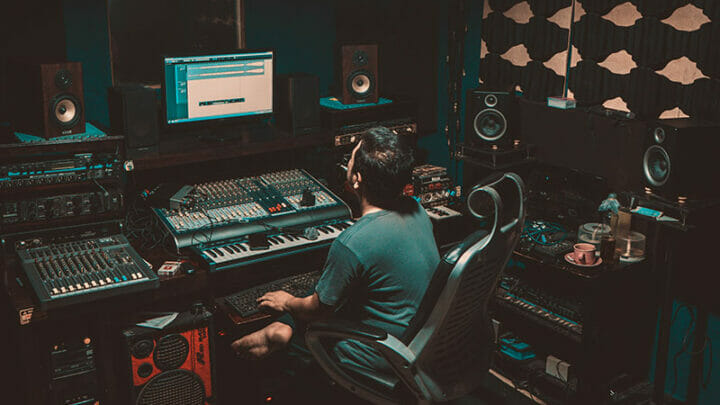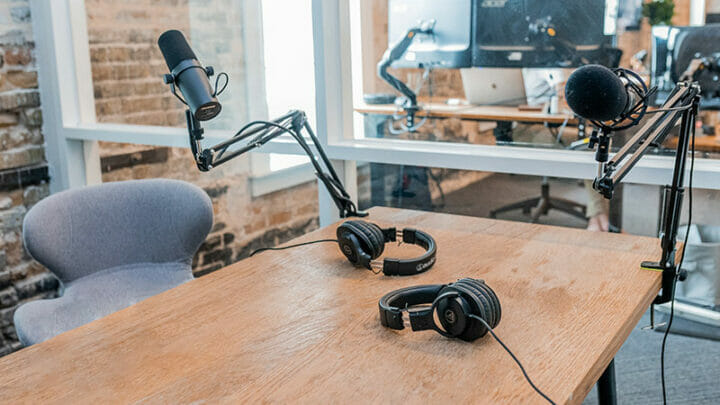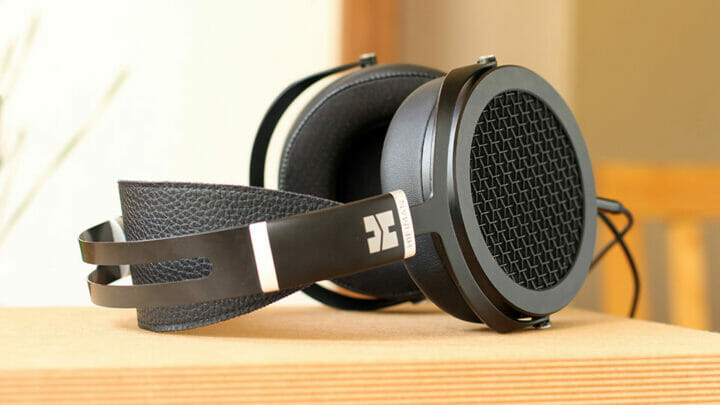Studio monitor headphones are typically neutral-sounding headphones with specific characteristics that make them an ideal choice for music creation.
Working in a studio requires reliable audio equipment, such as studio headphones, that can reveal hidden flaws and make the final mix sound flawless.
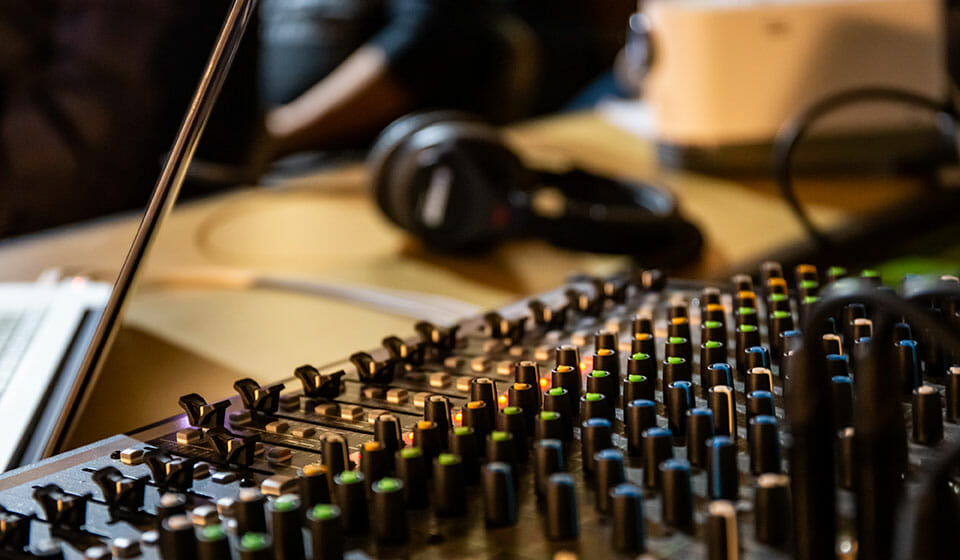
Before we begin, we must acknowledge there are (at least) 2 types of studio headphones:
- Monitoring
- Mixing/mastering
Monitor Headphones vs. Regular Headphones
Headphones you use in a studio aren’t the same as the ones you typically use for listening to music, even if you’re an audiophile.
That’s because they serve a different purpose and are primarily meant for professional work. This is how monitor headphones differ from regular headphones.
Design
- Monitor headphones are generally more robust or at least have the option to detach the cable and replace the earpads. That’s because they will go through lots of abuse (tossing around, accidental pulling on the cable) and sit on many different heads (drummer’s headphones can typically get pretty sweaty). Singers will sometimes use mono headphones with only one earcup. More on that later.
- Regular headphones don’t have specific requirements to fulfill, so they come in various designs, from ultra-cheap and unrepairable to high-quality and fully serviceable.

Connectivity
- Monitor headphones are all wired. Cable offers a reliable connection with zero latency, which is crucial for studio use. Wireless headphones have batteries, which limits their longevity.
- Regular headphones come in all types of connections since most headphone users don’t care about the audio delay when playing music.
Features
- Monitor headphones primarily focus on sound and don’t require any other feature.
- Regular headphones cater to general consumers who value having different features, even if they don’t use them very often, like active noise cancellation, ambient sound mode, etc.
Sound quality
- Monitor headphones must have a neutral sound signature or at least be balanced (strictly monitoring headphones worn by musicians don’t have to have a perfectly flat frequency response). That’s to hear potential flaws during the sessions on the sound engineer’s side and to hear the instrument’s tuning and vocal performance on the musician’s side.
- Regular headphones can have any kind of sound quality and tuning, depending on what the user seeks and budget.
As you can see, studio monitor headphones serve a different purpose than consumer-grade headphones, so they target a different audience. Here’s what we recommend:
- Pick monitor headphones if you work in a studio and want a durable piece with a balanced tuning that will let you focus on what’s in the music.
- Pick regular headphones if you primarily want to enjoy music and not dissect every detail in it.
What are Studio Monitor Headphones
Studio monitor headphones (or monitoring headphones) are used to monitor audio during recording sessions. Musicians wear headphones so they can monitor themselves and hear the playback audio.
Monitoring headphones differ from regular ones, particularly in durability, repairability, tuning, and zero-lag connectivity.

Related:
Using monitoring headphones in a studio
While you can capture instruments like a synthesizer by plugging it with a cable, singers and drummers must use headphones to avoid the playback audio from bleeding into the recording mics.
- Typically, studios have multiple monitoring headphones to hand to musicians. That’s why monitoring headphones require parts that can withstand abuse and are replaceable when damaged.
- No need for exceptional sound quality, but they must have balanced tuning. Also, headphones must be efficient, so you can connect multiple pairs to one source (lower impedance, high efficiency).
Some singers have issues with closed-back headphones because they don’t hear themselves correctly. So, some studios use mono headphones to prevent singers from removing the earcup during a session and potentially ruining the recording.

Audio monitoring
Audio monitoring is crucial due to multiple reasons:
- First, musicians need to hear themselves while playing or singing so they immediately know how they sound and how they can improve.
- Secondly, recording involves using microphones, so you can’t blast the room speakers while capturing vocals. To get a clean vocal recording only, the singer has to listen to the playback audio via headphones (playback audio helps the musician to know when to sing/play).
- Monitoring headphones (and in-ear monitors) are also used during live performances so that musicians can hear themselves and the rest of the band but at reduced loudness to prevent hearing damage.
What are Studio Headphones
Studio or mixing headphones (also called mastering headphones, or recording headphones) ensure the final mix sounds neutral. A neutral final mix is crucial to ensure it sounds good on all headphones and speakers.
For example, mixing on bassy headphones will force you to lower the bass of your mix. Consequently, when someone listens to your mix with actually neutral headphones, it would lack bass.

Since you don’t need multiple mixing headphones in a studio environment, you can pay more for them to ensure they can handle the task.
Sound quality, primarily neutral tuning, plays an essential role in mixing headphones. They can have a higher impedance to ensure slightly better high-frequency performance to seek details.
One thing worth mentioning is that audio engineers recommend listening to your headphone mix on studio speakers. Headphones can better focus on detail, whereas speakers reveal the spaciousness of the mix and possible tuning errors.
The main difference between studio mixing and regular headphones is in the tuning. Generally, a neutral sound signature tends to sound boring, which is why mixing headphones aren’t popular among the casual crowd.
Due to this reason alone, a sound engineer solely uses mixing or mastering headphones for professional audio work.
Keep in mind that some headphones use the “studio” on their packaging even if they aren’t suitable for professional work. This word has become equally abused by manufacturers as the word “Pro”.
The difference between monitoring headphones and recording headphones
They’re basically the same, but there’s a difference in intended use.
- Monitoring headphones, also known as studio headphones or reference headphones, are primarily designed for accurate sound reproduction during the mixing, remastering, and monitoring stages of music production. Their main purpose is to provide a transparent and unbiased representation of the audio being played through them.
- Recording headphones, also referred to as tracking headphones or performance headphones, are primarily used during the recording process. Their main purpose is to provide accurate audio monitoring for musicians and performers while recording their instruments or vocals.
Studio Monitors vs. Studio Headphones
To summarize, you can find 2 types of headphones in music recording studios: monitoring and mixing headphones. Both serve different purposes and have diverse characteristics.
Studio monitors
- Neutral or at least balanced tuning
- Closed-back earcups to avoid sound leakage
- Durable with replaceable parts
- Wired and efficient connection (low impedance, high sensitivity)
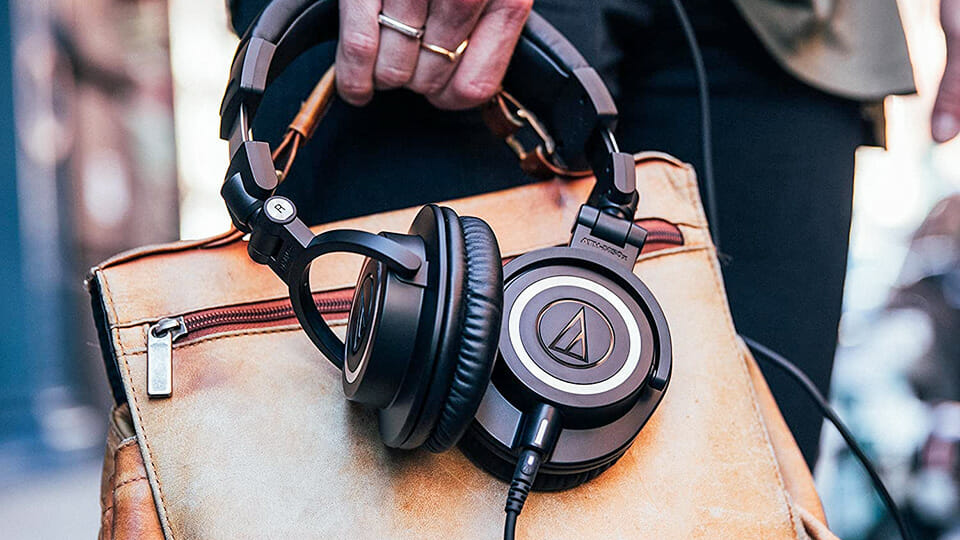
Studio headphones
- Neutral tuning
- Closed or open-back earcups, as the sound isolation and leakage isn’t the problem during mixing
- Durable with replaceable parts
- Wired, but not necessarily efficient connection
To summarize:
Studio monitors help musicians monitor their performance and the performance of other musicians during a session. Also, it helps them to follow the rhythm by playing playback audio of already recorded instruments/vocals.
Studio headphones are best for mixing all of the recorded sounds into a song.
Studio Headphones & Monitors vs. Regular Headphones
Studio and regular headphones differ primarily in features and connectivity. The ones for the studio need to be more reliable. To summarize:
Studio headphones
- Neutral or at least balanced tuning
- Durable build with replaceable parts
- Wired connection for zero lag
- Closed-back for monitoring, closed or open-back for mixing
- No need for extra features, just sound
Regular headphones
- Any tuning you want, from neutral to bass boosted, as accuracy isn’t a requirement, only enjoyment
- Durability or replaceable parts isn’t a requirement
- Wired or wireless as zero lag audio playback isn’t a requirement
- Closed or open-back, depending on where the user wants to use the headphones
- Extra features are a plus, like ANC, ambient sound mode, remote controls, spatial audio, etc.
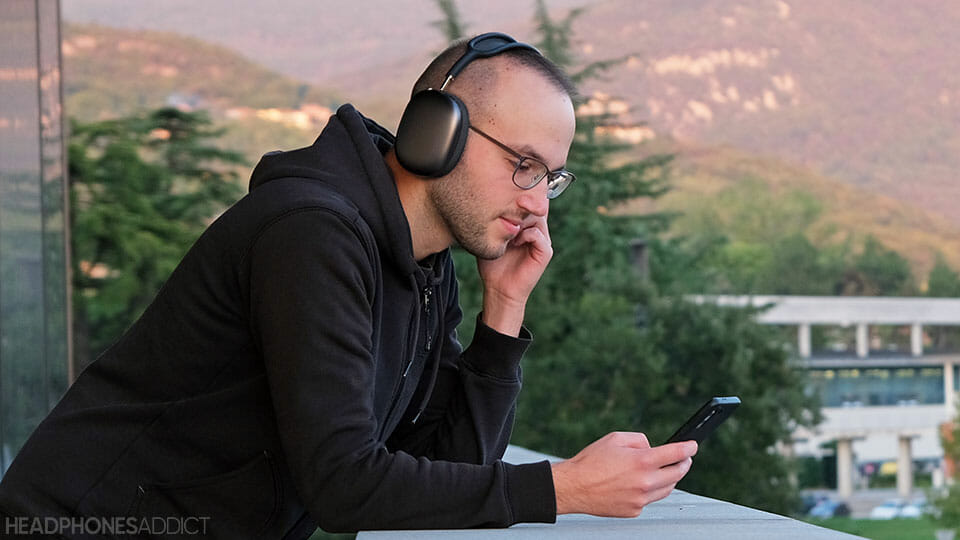
Regular headphones can be whatever a customer wants to make their life easier. Those headphones don’t have to serve a specific purpose so they can be a jack of all trades.
On the other hand, studio headphones are designed for specific applications. You can use them for casual listening, but there are other options out there that offer a better user experience for that.
What are Reference Headphones
As the name suggests, reference headphones can accurately portray the original recording. They serve as a reference to how the recording should sound.
Reference headphones are usually well-controlled and detailed. However, they’re typically used by audiophiles rather than studio workers.
That’s because many reference headphones are expensive and luxurious, and they can slightly colorize the sound.
Take Sennheiser HD 650, for example. They’re classified as quality reference headphones, but they reproduce sound that’s warm and dark, making them unsuitable for critical work.

Reference or audiophile headphones, compared with other types of headphones, are often calibrated to match a specific frequency response curve, have a higher dynamic range, and are more neutral than average studio headphones.
Frequently Asked Questions (FAQ)
What is the difference between monitor and studio headphones?
The difference between monitor and studio headphones is that monitor headphones are used for monitoring the musician’s performance or listening to playback audio, whereas studio (or mixing) headphones are used for mixing the final master recording.
Are monitor headphones good for gaming?
Monitor headphones are good for gaming but aren’t tuned to immerse you into gameplay. They lack bass for in-game effects and features like virtual surround sound to enlarge the soundstage.
Why are studio headphones so cheap?
Studio headphones can be cheap or expensive, depending on brand and model. Monitoring headphones can be affordable as you need many of them and will probably break often, whereas mixing headphones need flat sound quality, which costs more money.
Is it OK to listen to music on studio monitors?
Yes, it is OK to listen to music on studio monitors if you’re looking for a neutral or balanced sound signature. Otherwise, you might find them a bit boring if you’re used to a stronger bass response.
Do I need studio monitor headphones?
You need studio monitor headphones if you plan to make a home studio or want to listen to music with a more neutral sound signature. You can use regular headphones for monitoring, but you’ll hear sounds differently than what your mic is capturing.
Conclusion
Choosing between studio headphones and regular ones depends on what you plan to use them for. For example, it’s pointless to buy studio headphones for commuting or exercising.
Therefore, pick studio headphones if you:
- Plan to use them for monitoring or mixing
- Like more neutral sound when listening to music or gaming
- Don’t plan to use them outdoors
On the flip side, pick regular headphones if you:
- Only care about enjoyment and not sonic accuracy
- Plan to use them outdoors for running or working out
- Want to commute with them and block ambient noise
- Don’t mind shorter lifespan (in the case of Bluetooth headphones and batteries)
If you’re looking for professional headphones, you should check the top headphones for mixing.

From a childhood fascination with sound, Peter’s passion has evolved into a relentless pursuit of the finest headphones. He’s an audio expert with over 5 years of experience in testing both audiophile and consumer-grade headphones. Quote: “After many years, I can confidently tell which headphones are good and which are terrible.” Find his honest opinion in his reviews.

